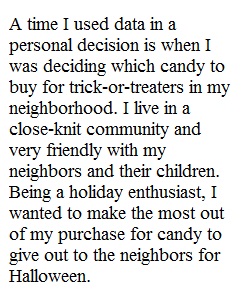


Q In real-life applications, statistics helps us analyze data to extract information about a population. In this module discussion, you will take on the role of Susan, a high school principal. She is planning on having a large movie night for the high school. She has received a lot of feedback on which movie to show and sees differences in movie preferences by gender and also by grade level. She knows if the wrong movie is shown, it could reduce event turnout by 50%. She would like to maximize the number of students who attend and would like to select a PG-rated movie based on the overall student population’s movie preferences. Each student is assigned a classroom with other students in their grade. She has a spreadsheet that lists the names of each student, their classroom, and their grade. Susan knows a simple random sample would provide a good representation of the population of students at their high school, but wonders if a different method would be better.
Q You can review the student demographics here: Module One Discussion Data. In your initial discussion post, specifically address the following: • Introduce yourself and describe a time when you used data in a personal or professional decision. This could be anything from analyzing sales data on the job to making an informed purchasing decision about a home or car. • Describe an example of a sample of this student population that would not represent the population well. • Describe another example of a sample that would represent the population well. • Finally, describe the relationship of a sample to a population and classify your two samples as random, cluster, stratified, or convenience. In your response posts to at least two peers, discuss the following: • Choose two different sampling methods from among your peers’ responses. Then, identify bias in each peer’s sample and explain how you think they could remove the bias from their sample.
View Related Questions